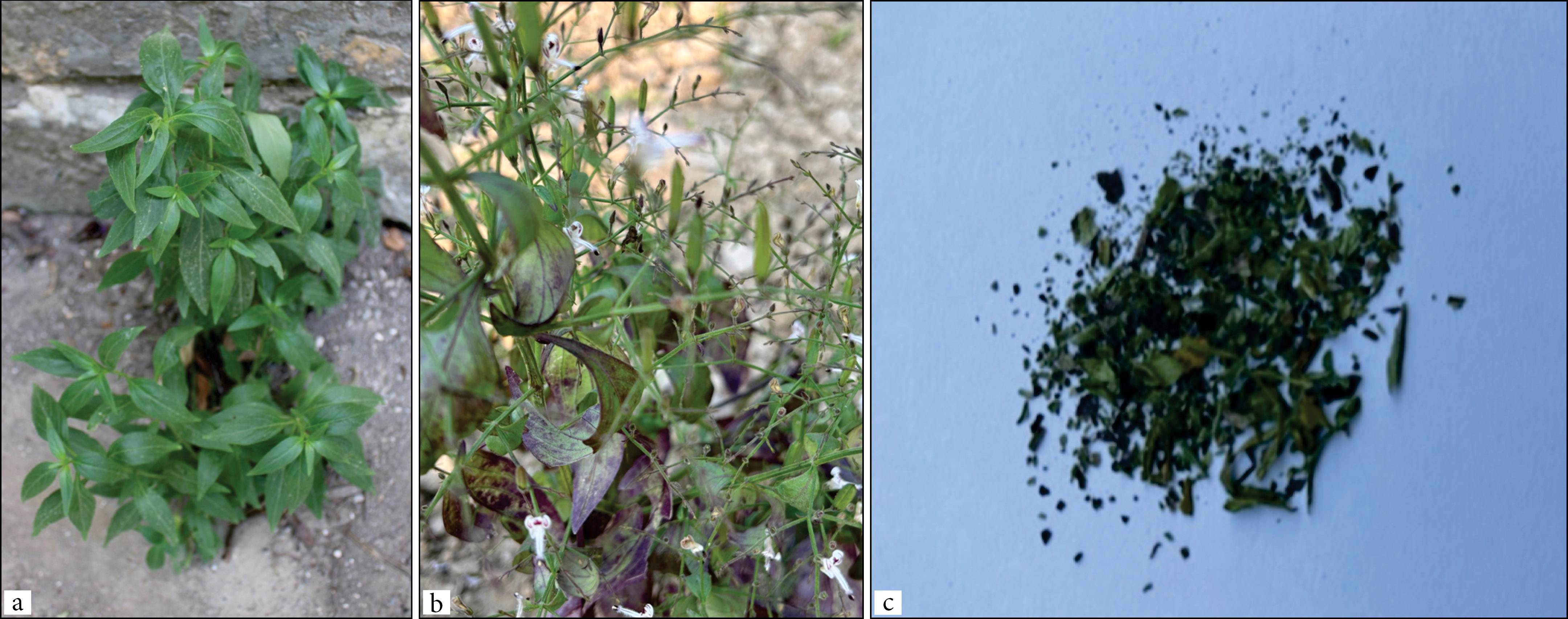INTRODUCTION
Andrographis paniculata is a plant that has been effectively used in traditional Asian medicines for centuries (Akbar, 2011). This herbaceous plant, commonly known as ‘King of Bitters’ in the family Acanthaceae (Puri et al., 1993), is widely cultivated in Southern Asia (Jarukamjorn & Nemoto, 2008). The author had made studies of ethno-therapeutics of some medicinal plants from Meerut district of Uttar Pradesh (Tomar & Singh, 2005; Tomar, 2007, 2019, 2020, 2022). During a survey of medicinal plants around Meerut district, the author noticed many populations of Andrographis paniculata (Kalmegh). It is an erect, annual herb, growing to a height of 110 cm tall, in moist shady places, extremely bitter in taste in every part of the plant. The branches are dark green, quadrangular, with longitudinal furrows and winged on the angles of young parts. Leaves are glabrous, ovate-lanceolate, 5-10 × 1.5-2 cm. Flowers are small, white with rose-purple spots on petals, arranged in lax, axillary and terminal, unilateral racemes, forming a panicle. Capsules are linear-oblong, acute at both ends having numerous, yellowish brown whitish seeds, spotted with rose-purple. Flowering and fruiting period is December-April. (Figs. 1a, b, c).
A discussion with the local healers resulted in interesting information on the use of the plant in curing malarial fever
as presented here.

Figure 1a. Andrographis paniculata (Vegetative), b. Andrographis paniculata (Reproductive), c. Dried leaves of Kalmegh.
MATERIALS AND METHODS
The present paper is based on the survey and collection of data from the native informants, the Vaidhya/Hakims (Ayurvedic medicine practitioners) and the rural people having knowledge about medicinal plants with their local names. Oral interviews were held in villages and informations were recorded on spot. Medicinal plants were collected, processed, made into herbarium specimens and identified with the help of available floras. Andrographis paniculata (Kalmegh) was one of the medicinal plants collected during the survey.
Method to preparation of Medicine
a.) Crushed leaves/whole plant (2 tsp) in one cup of normal water is boiled gently in a saucepan with the lid on and left to simmer for 5-7 minutes. The decoction is strained, cooled and it is ready to drink. Decoction must be used on the day of preparation. The standard dosage for a decoction is 250 ml twice a day for 20 days.
b.) An infusion is prepared with fresh leaves (10-12) per cup of boiling water, infused for 10 minutes. It is covered with lid during the steeping period. It is strained through a strainer and used. Not to be left for too long, as it can become bitter and too strong. The standard dosage for an infusion is 250 ml four times a day for 20 days.
c.) Fresh juice of plant is given in doses of 4-5 teaspoonfuls twice a day for 15 days.
d.) 4-5 leaves of Kalmegh with normal water are consumed internally thrice a day for 20-30 days.
CONCLUSION
The present work concludes that people of Meerut district, Uttar Pradesh, possess rich knowledge about folk medicinal uses of Andrographis paniculata and its utilization. This study proposes documentation of traditional knowledge of medicinal plants and conservation of these resources for future use.
